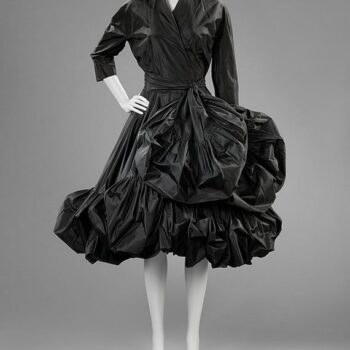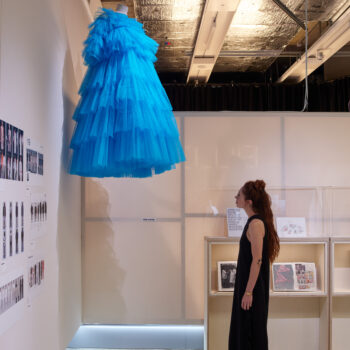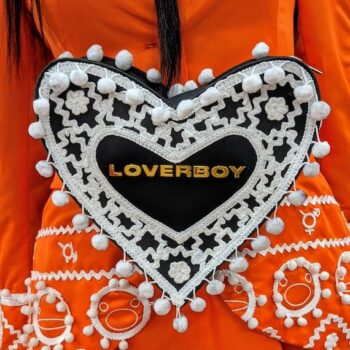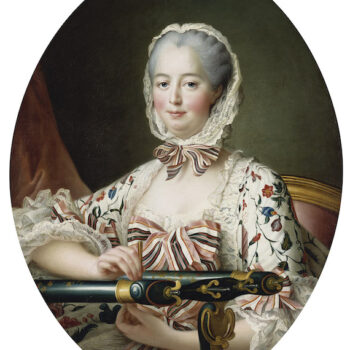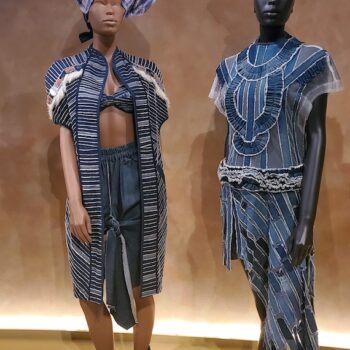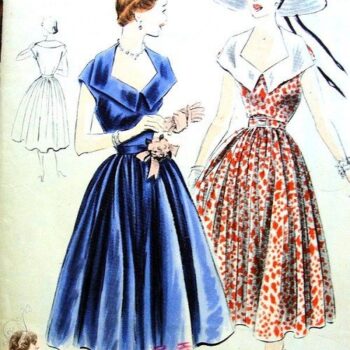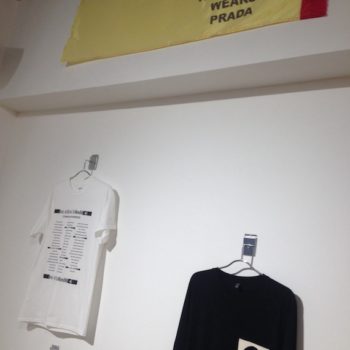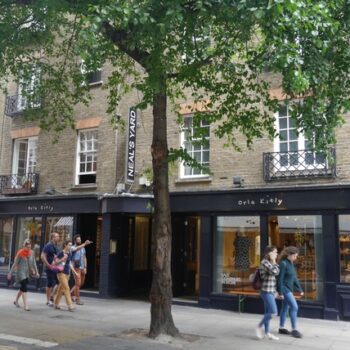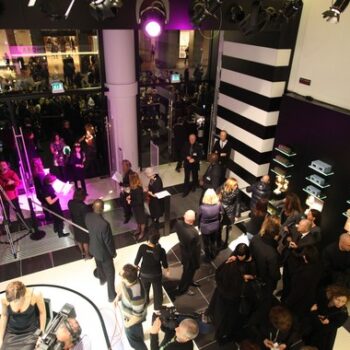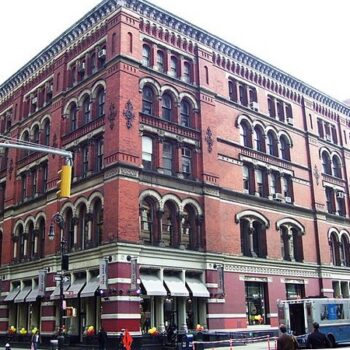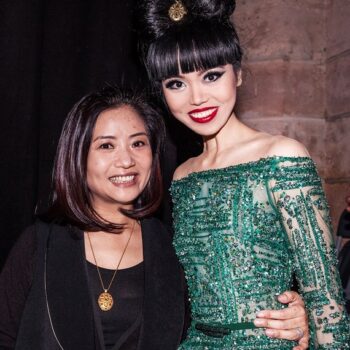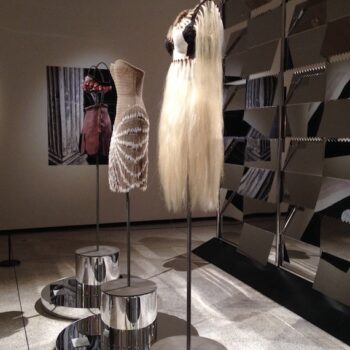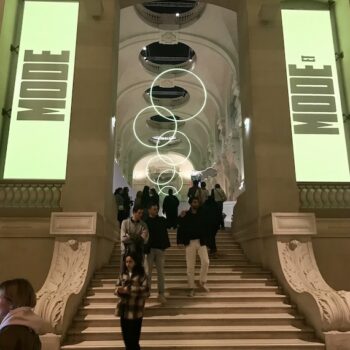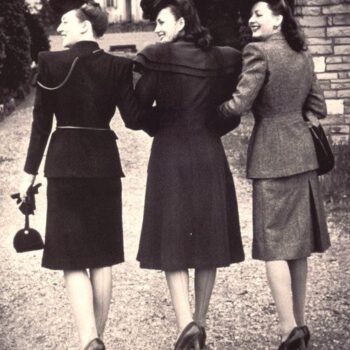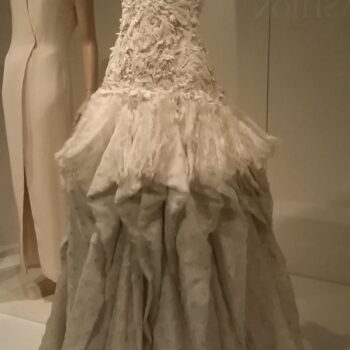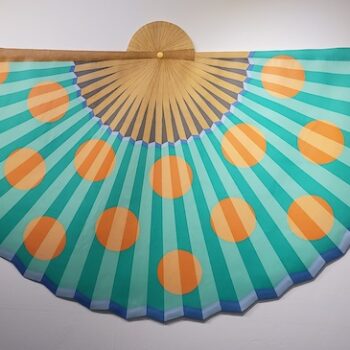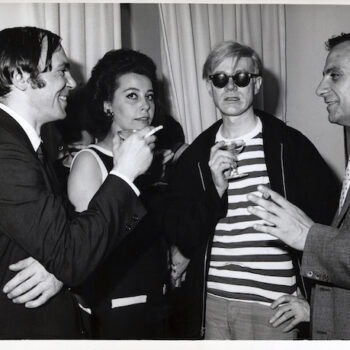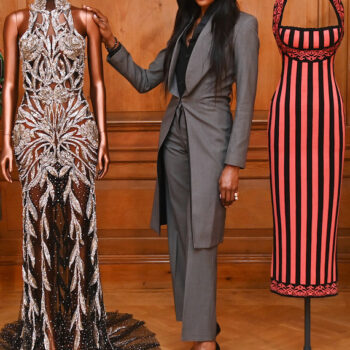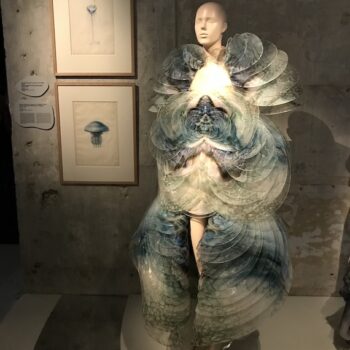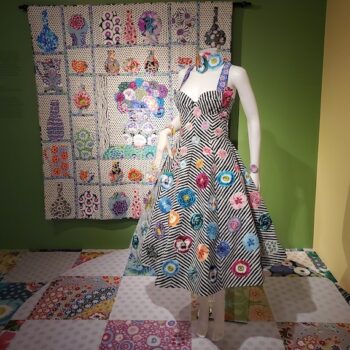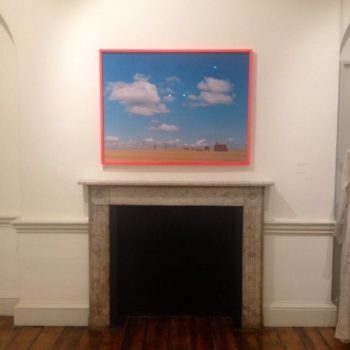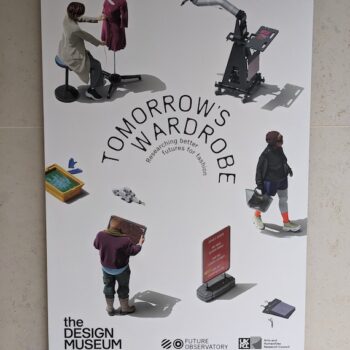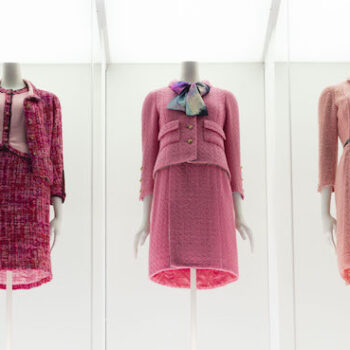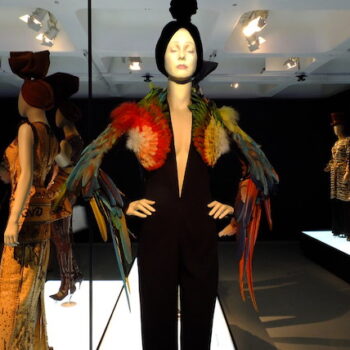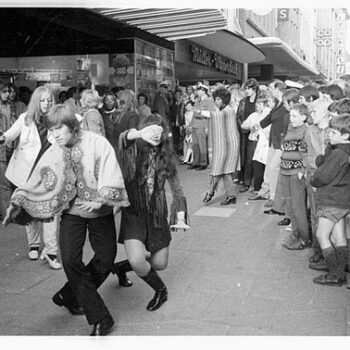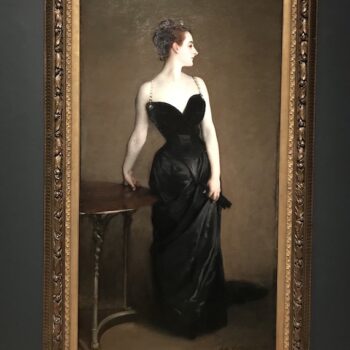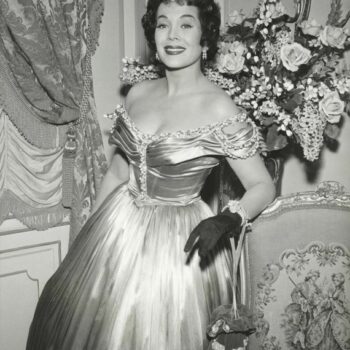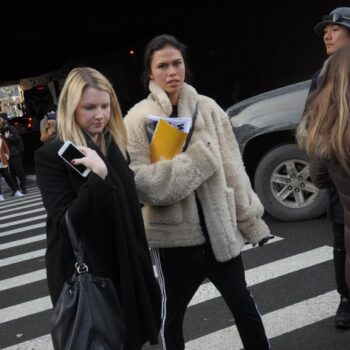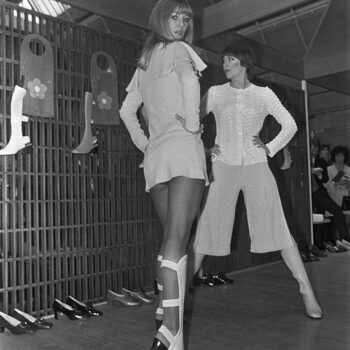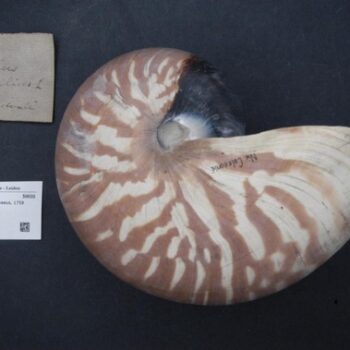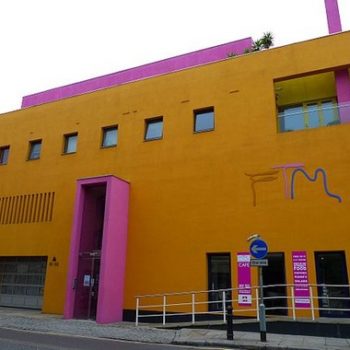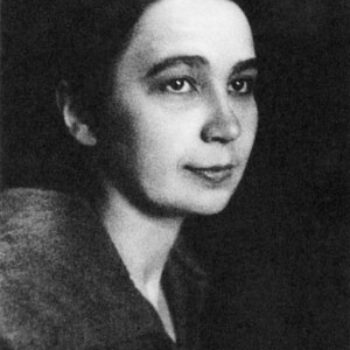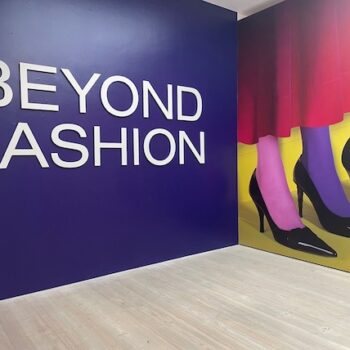Balenciaga: Shaping Fashion review
May 25, 2017Balenciaga is one of those fashion designers whose work people longed to own, back when it was made. But he didn’t take advantage of this, often turning away clients at the door to his exclusive atelier. He only took part in one interview in his entire life, did no publicity stunts, and his models were ordinary looking, middle-aged women. Maybe that’s why Balenciaga is a name that doesn’t instantly spring to mind when most people think of “fashion greats”. However, the V&A plans to change that with Balenciaga: Shaping Fashion.
But Balenciaga’s work is anything but boring. The V&A holds the largest archive of his work in the world but some of the pieces have never come out of storage due to curator’s puzzlement over which way up they should go. And some clients sent pieces back because they couldn’t go to the toilet in them. Entering the show, you could be forgiven for thinking it is about a contemporary Japanese avant-garde designer.
Balenciaga: Shaping fashion – the workings of an innovative designer
As Balenciaga: Shaping Fashion shows, the designer was a true innovator. He treated dresses as a sculptural form – almost too much sometimes as they could be hard to wear: those smooth and figure skimming sheets of fabric were often firmly constructed inside with boning, integral corsets and dress weights.
But unlike his peers of the 1950s and 1960s, whose muses were the women with an idealised hourglass or very skinny form, Balenciaga liked a little tummy. Radically for the time, his models were of all races and sizes, and were not often conventionally attractive either. They were dubbed “Monsters” by an unimpressed press.
Many of his designs skipped the waist altogether. One result was the unappealingly named “sack” dress, and other dresses were A line, cocoon, or other meditations on volume that little to do with a woman’s figure. These suited his clients well, because many were middle-aged and older society ladies of average proportions. Or perhaps he picked his clients to suit his clothes, as he did turn many would-be clients away.
Balenciaga: Shaping Fashion – Controversial shapes
However, the press often disliked his work on sight. Legendary magazine editor Carmel Snow asked “Why should a woman look like a house?” and indeed, many of the mannequins look, if not exactly like a house, like they’re in the early stages of pregnancy.
Balenciaga was also radical in other ways. His designs didn’t work well with existing fabrics, which lacked the required stiffness to hold designs, so he worked with textile manufacturers to develop his own. As a result of that, these classical gowns are not always made with silk as you would think, but man-made materials.
Balenciaga: Shaping Fashion – Spanish Inspiration
He was also very influenced by his Spanish upbringing, as the exhibition very clearly demonstrates. Not only does the aestheticism of Catholic priestly robes make a surprising appearance, but the drama of the bull ring and dance floor saw him creating absolutely gorgeous sequinned and beaded bolero jackets for women’s evening wear which greatly resembled the jackets of the matador, and evening dresses in hot pinks with flounces and ruffles that brought the glory of the flamenco dress to high fashion. But when you see these “matador jackets” and “flamenco dresses” in real life, you’ll never mistake them for the original inspiration.
Glorious those clothes may be, but Balenciaga’s version elevates them – the flamenco style dress is simplified and made in his favourite silk gazar, standing stiff and elegant. The matador jacket is expertly cut for the female form, and its intricate sequins and beading could only have been applied by a couture house.
Loyal Clients
These creations are gathered in their glass cases as if they are clients at Balenciaga’s salon, to give you the full feeling of being involved in his exclusive world. Ensembles feature which were owned by Ava Gardner, as well as garments worn by Gloria Guinness and Mona von Bismarck, who was a huge, huge fan of the couturier. These favoured clients often had the garments altered, with or without the knowledge of the master.
Ava Gardner, who was dramatic, took his clean, pure forms and added ostrich feathers to sleeves or massive fabric flowers to a bust line. Another client gave minute instructions about the length of a hem, exact number of buttons, or precise colour – in fact, she would demand that the fabric supplied by the house was dyed to a particular colour of her choosing before being made up into the garment, and that furthermore a sample of the dyed fabric be sent to her shoe maker so he could construct the perfectly matched shoes to go with the outfit.
Nevertheless these clients were extremely loyal to just one or two couturiers and would spend so much time having fittings and discussing their garments with a dressmaker like Balenciaga that they began to feel like family. When Balenciaga closed his house in 1969 Mona von Bismarck, who had just about all her clothes made by him down to her gardening shorts (and why not look fabulous while gardening?) didn’t come out of her room for three days. She couldn’t imagine what the future would look like without him.
Balenciaga: Shaping Fashion – The peak of his career
Balenciaga: Shaping Fashion is based largely on the V&A’s holdings of Balenciaga, and they have sensitively and thoughtfully taken the chance to air some of the collection. The idea is not to have a retrospective but to show the designer at his peak, in the 1950s and 60s.
When Balenciaga started out he was very influenced by the fashion greats Vionnet and Chanel, so his work wasn’t so original. (The designers later became friends). By the time he moved to Paris to really create his name as a great couturier he had been in the fashion business for 20 years. The 50s and 60s is where he really started to experiment, and these pieces are the result.
Balenciaga: Shaping Fashion isn’t a flash-bang show like the crowd wowing Alexander McQueen and David Bowie exhibitions, but more for the fashion connoisseur, someone who’s going to appreciate the sheer glory of the construction of these gowns – as in previous V&A shows, x-rays are shown alongside the garments to help to explain exactly what held them up and out. But just because I’ve seen it before doesn’t make this trick any less fascinating – but hey, I love x rays of my own teeth, too. As well as the x rays there are animations to show how the pieces come together.
Try it yourself
All in all there are over 100 garments and 20 hats, many of which have never been on public display before. They are enriched by archive sketches, patterns, beautiful photographs of the dresses being modelled and worn, and fabric samples. A fun touch at the end is a replica of one of his multi functional skirt/cape pieces, which visitors can try on themselves in front of a selfie board.
Balenciaga: Shaping Fashion – Inspirational
The Balenciaga brand continues today, directed by Demna Gvasalia. As a designer, to me he is not an obvious heir, but this exhibition hopes to persuade you otherwise. Upstairs the master’s work is compared to Gvasalia’s, as well as former Balenciaga creative director Nicolas Ghesquière, who used his inspiration more clearly. Some of the contemporary pieces he created were made in the same fabric, by the same mills that the label’s namesake used.
Other designers who may have been influenced by him are also shown: anyone in the last 50 years from his former apprentices André Courrèges and Emanuel Ungaro, and more recent designers such as Phoebe Philo for Celine, Erdem, Molly Goddard and J.W. Anderson. Of course there is the obligatory video of contemporary designers talking about him too. I, personally, am not sure how well this section works.
Despite the explanatory labels it’s pretty hard to pin a designer down to one influence, unless they specifically went to the archive and studied just that designer – ideas seep into consciousness and Balenciaga wasn’t the only one to make a shift dress or play with volume. Where a gown looks heavily influenced (and some do) it’s tempting to cry copy, not inspiration.
Despite these caveats it’s really a great, fascinating exhibition, and I would urge anyone interested in fashion history to go.
Balenciaga: Shaping Fashion is at the Victoria and Albert Museum and runs from 27 May 2017 – 18 February 2018.



